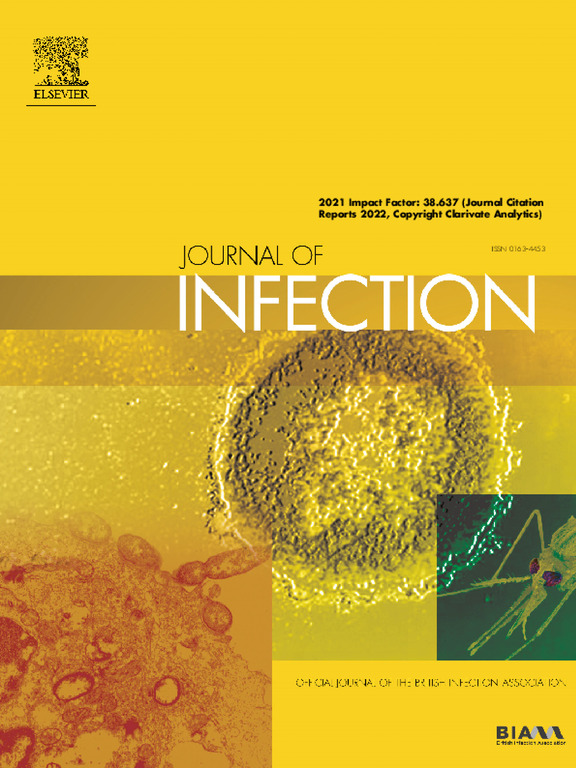小rna测序确定了与恰加斯病患者异常心电图结果相关的血清微小rna。
IF 11.9
1区 医学
Q1 INFECTIOUS DISEASES
引用次数: 0
摘要
背景:由克氏锥虫(T. cruzi)寄生虫引起的恰加斯病影响了拉丁美洲约600 - 700万人以及美国和欧洲数十万人。慢性恰加斯病的主要并发症是心肌病,可能表现为心律失常、心力衰竭或心源性猝死。了解克氏锥虫感染与心肌病之间的联系对于早期诊断和适当治疗至关重要。方法:我们对来自智利、玻利维亚和意大利的228名恰加斯病患者的血清样本中的小rna进行了测序。在对测序数据进行生物信息学处理以量化血清miRNA表达后,应用稳健逻辑回归识别心电图异常、心电图束支阻滞和高Kuschnir评分的Chagas患者的miRNA差异表达。我们还研究了基于基因型的miRNA表达与ECG异常风险之间的关系。结果:据报道,男性患者出现异常心电图的风险更高,并且随着年龄的增长而增加。在ECG异常患者中,miRNA-101-3p、miRNA-576-3p和miRNA-629-5p的血清表达水平较低(p < 0.0002),尤其是在Kuschnir评分高的患者中。miRNA-629-5p的表达与CCL5的表达呈负相关(p = 3.7×10-8), CCL5是恰加斯病中经常报道的一种趋化因子,基因富集分析表明细胞因子信号通路参与恰加斯心肌病。解释:这些发现证明了循环mirna作为恰加斯心肌病诊断生物标志物的潜力。发现与疾病严重程度和免疫反应的关联可能有助于提高我们对恰加斯病并发症发展的认识。本文章由计算机程序翻译,如有差异,请以英文原文为准。
Small-RNA sequencing identifies serum microRNAs associated with abnormal electrocardiography findings in patients with Chagas disease
Background
Chagas disease, caused by the parasite Trypanosoma cruzi (T. cruzi), affects around 6–7 million people in Latin America and hundreds of thousands in the United States and Europe. A main complication of chronic Chagas disease is cardiomyopathy, possibly manifesting as arrhythmias, heart failure, or sudden cardiac death. Understanding the link between T. cruzi infection and cardiomyopathy is essential for early diagnosis and adequate treatment.
Methods
We sequenced small RNAs in serum samples from 228 Chagas patients recruited in Chile, Bolivia and Italy. After bioinformatic processing of sequencing data to quantify serum miRNA expression, robust logistic regression was applied to identify miRNAs differentially expressed in Chagas patients with abnormalities in electrocardiography (ECG), bundle-branch block on ECG, and high Kuschnir scores. We also investigated the association between genotype-based miRNA expression and the risk of abnormal ECG findings.
Findings
As reported, the risk of abnormal ECG findings was higher in male patients and increased with age. Three miRNAs showed lower serum expression levels in patients with abnormal ECG: miRNA-101-3p, miRNA-576-3p and miRNA-629-5p (p < 0.0002), especially in patients with high Kuschnir scores. The expression of miRNA-629-5p was negatively correlated with the CCL5 expression (p = 3.7×10-8), a chemokine frequently reported in Chagas disease. Gene enrichment analyses indicated involvement of cytokine signalling in Chagas cardiomyopathy.
Interpretation
The findings demonstrate the potential of circulating miRNAs as diagnostic biomarkers for Chagas cardiomyopathy. The associations found with disease severity and immune response may help to improve our knowledge of complications’ development in Chagas disease.
求助全文
通过发布文献求助,成功后即可免费获取论文全文。
去求助
来源期刊

Journal of Infection
医学-传染病学
CiteScore
45.90
自引率
3.20%
发文量
475
审稿时长
16 days
期刊介绍:
The Journal of Infection publishes original papers on all aspects of infection - clinical, microbiological and epidemiological. The Journal seeks to bring together knowledge from all specialties involved in infection research and clinical practice, and present the best work in the ever-changing field of infection.
Each issue brings you Editorials that describe current or controversial topics of interest, high quality Reviews to keep you in touch with the latest developments in specific fields of interest, an Epidemiology section reporting studies in the hospital and the general community, and a lively correspondence section.
 求助内容:
求助内容: 应助结果提醒方式:
应助结果提醒方式:


